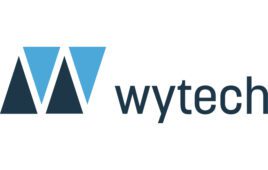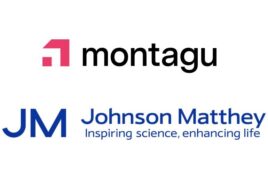It’s about sticking to the basics, growing — and much more. One of Greenberg Traurig’s top corporate lawyers shares his insights about leading a medical device company to an acquisition or IPO.

[Image from Unsplash]
Leading a young medtech company to a successful exit, according to Elowe, is all about sticking to the basics: identifying a target market, regulatory, intellectual property, not burning through funding too quickly, and more. Entrepreneurs need to keep their company’s momentum going, attack and resolve their problems in the marketplace, and create a well-defined story.
“When you get into the exit stage, your story should be well- defined. You should know what you’re presenting to the buyers,” Elowe recently told Medical Design & Outsourcing.
Here are more insights from Elowe about the present state of medtech M&A and IPOs, as well as advice on how young medical device companies can make the most of the present environment.
MDO: When it comes to getting a medical device company acquired, what is different now versus 10 years ago?
Elowe: The fallout from what was coming out 10 years ago economically, the financial meltdown — that just brings a different kind of discipline into the deal-making world. People are going to be more careful when they’re spending their money. What that means, on the exit side, is people are looking at things more carefully. We still are seeing very active markets generally, but to get there, companies are probably a little more careful than they were at one time, and then making sure that the targets check a number of boxes, in terms of things such as what space they’re filling, what is the strategic fit to the buyer, do they have their IP in order, their regulatory path mapped out, all of these different factors that a buyer might look at in terms of evaluating a company.
I think it creates some challenges on the exit side, but at the same time, it comes back to just being disciplined in how a company is going to operate itself from a very early stage going forward. It’s a highly regulated industry. You have to have your house in order from the beginning, or you’re not going to go anywhere.
MDO: Are there opportunities?
Elowe: Strategic buyers are looking at a much broader range of devices and capabilities than even 10 years ago. There is this blending and convergence of capabilities. A device might have AI or software capabilities behind it or add some big data applications. The strategic players are looking at devices from perhaps a broader perspective in terms of the value creation in the delivery of the healthcare service, and even more so in terms of how they’re trying to deliver their products and services into a broader spectrum of the healthcare service path for the patient. All of these things coming together in the industry create opportunities for companies to fill needs or provide capabilities that at one time may not have been as prevalent in this industry.
MDO: When it comes to young medtech companies with the goal of getting acquired, what are the biggest mistakes you’ve seen them make?
Elowe: One of the things companies need to do early on, as they’re growing, is just grow the business. It sounds obvious on one level, but from an exit perspective that’s your best selling point. You want to build your audience — people who know what you’re doing and watching you. Business development teams in the strategics build stables of companies they may be looking at, to see how they’re going and developing … and start to evaluate them along the way. Success is the best selling point for a company. Failing to focus on this fundamental and failing to connect with your audience can create a problem if one waits to start the process too late.
Another mistake, sort of a double-edged factor — do you bring a strategic in as an investor into your company? An investment from a strategic can bring many benefits— industry experience, strategic interest and a cachet of having a big name investor. A lot of strategics however, will come in and want a right of refusal to buy the company if there is a sale or exit, and that can kill your ability to sell to others or at least impact your valuation to a third-party buyer. When granting these rights, you’re basically requiring a third-party buyer to be out there waiting to see if the strategic is going to exercise its right or not. When you negotiate an investment from a strategic, I think you have to be careful about trying to limit how many tentacles they have into your company and try and push off some of those more onerous rights like right of refusal. Otherwise, it may impact your valuation or ability to shop the company to other third party buyers.
MDO: We’ve noticed over the past year that IPOs have made a comeback in the medtech space. What changed?
Elowe: Right now, we’re in that economic period where there’s some open windows in the market for companies to get an IPO done. I think there’s also an appetite in the marketplace for the innovation that is coming out of the companies — this convergence of technologies that are coming together to deliver a healthcare solution.
A lot of them are not raising billions dollars. Sometimes, they’re going out and raising less than a hundred million dollars in an IPO. I sort of scratch my head because you take on all of the regulatory baggage of being a public company, without the huge market valuation necessarily. But then again, you play the cards you’re dealt with. … You can take a little money off the table, or you raise some money, then you fight the battle the next day of what are you doing as a public company — and operating in that environment too. Overall, if an IPO provides another funding route, despite the challenges, it’s a good result for developing companies if other funding sources are not available or less attractive. In the end, public or private, these companies will need to execute their business plan, develop and cultivate their avenues for exit if they seek the larger payouts to stockholders.




